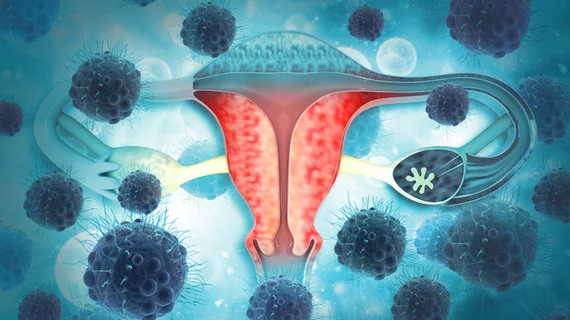Pretargeted radioimmunotherapy shows early promise in treating aggressive ovarian cancer
A recently developed pretargeted radioimmunotherapy (PRIT) system has displayed potential in treating advanced epithelial ovarian cancer with limited side effects. This therapy, known as anti-HER2 225Ac-PRIT, specifically targets a protein commonly found in ovarian cancer using radiation, and it was very effective at treating cancer in mice. The team behind this research shared its findings in the September issue of The Journal of Nuclear Medicine. [1]
Epithelial ovarian cancer, especially when presenting as advanced-stage disease with peritoneal carcinomatosis, has been challenging to treat, resulting in a poor prognosis with a five-year overall survival rate of 18-46%. The primary cause of death among these patients is the extensive peritoneal disease burden and malignant bowel obstruction.
“Due to the explosion of immune and targeted therapies in the past few decades – particularly those targeting HER2 – there is increasing interest in the potential role of alternative, more innovative therapies to cure epithelial ovarian cancer,” co-author Sarah M. Cheal, PhD, a radiologist with Weill Cornell Medical College said in a statement. “In this study, we adapted our PRIT system to target HER2 in epithelial ovarian cancer and explored whether this could effectively treat the disease without significant toxicity.”
The preclinical study involved several groups of mice with peritoneal carcinomatosis tumors. Some groups received one or two cycles of anti-HER2 225Ac-PRIT, while others were untreated or received alternative treatments and served as controls. Over 154 days, the researchers monitored the mice's weights and tumor progression.
In untreated mice, tumors rapidly spread, leading to a median survival of 112 days. Mice treated with one or two cycles of anti-HER2 225Ac-PRIT showed a prolonged survival that reached beyond the 154-day study period, with 85% (17 out of 20) surviving in the treated groups compared to only 33% (9 out of 27) in the control group. At the end of the study, 75% of mice in the anti-HER2 225Ac-PRIT treatment groups were confirmed to be clinically improved, and all treatments were well-tolerated by the mice.
Importantly, the treatment exhibited minimal toxicity. In a subset of mice that received two cycles of treatment, kidney radiotoxicity was mild and did not result in clinical symptoms. The authors believe the safety profile would be similar for humans.
“In this study we achieved high potency with anti-HER2 225Ac-PRIT while maintaining an acceptable safety profile,” co-author Steven M. Larson, MD, Memorial Sloan Kettering Cancer Center said in a statement. These findings suggest that when scaled to human patients, we can achieve curative tumor radiation-absorbed doses without major normal organ toxicity”
In short, the findings highlight that targeted α-therapy with the anti-HER2 225Ac-PRIT system holds significant promise as a potential treatment for challenging cases of epithelial ovarian cancer. This research offers hope for the development of more effective treatments for ovarian cancer, though further clinical trials and research are needed to assess the therapy's effectiveness and safety in human patients.

